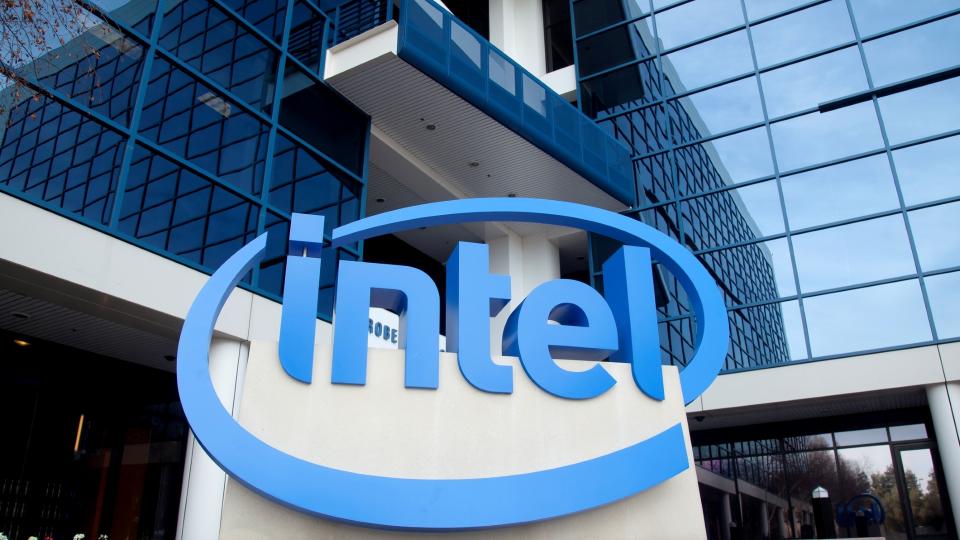Here’s Why You Should Consider Investing in Intel Today

In 2022, Congress passed the CHIPS Act to promote semiconductor development within the United States, rather than from foreign providers. Specifically, the act appropriated $39 billion to help wean U.S. dependence on semiconductor manufacturers in Taiwan and South Korea for chips needed in everything from spy satellites and telecom gear to medical devices and missiles.
Check Out: I’m a Self-Made Millionaire: 5 Stocks You Shouldn’t Sell
Try This: How To Get $340 Per Year in Cash Back on Gas and Other Things You Already Buy
In March, 2024, semiconductor giant Intel became the biggest single beneficiary of the deal, receiving a loan and grant package to expand domestic semiconductor manufacturing at the company’s plants in New Mexico, Ohio, Oregon and Arizona.
Here are the particulars of the deal, including how other semi companies stand to gain, and a look at whether or not this makes Intel a good buy right now.
What Is the Deal Intel Struck With the Government?
The U.S. government, under authorization by the CHIPS Act, awarded $8.5 billion in federal grants and an additional $11 billion in loans to use four new semiconductor plants across the country. This is on top of the $100 billion in private capital that Intel itself has already invested in domestic semiconductor production.
Analysts project this will be enough to allow Intel to produce 20% of the world’s “bleeding-edge” logic chips, critical for military and AI applications by the end of the decade. Currently, the U.S. doesn’t produce any of these chips, so this will mark a dramatic shift in the balance of power when it comes to essential semiconductors.
Does This Make Intel a Good Investment?
Anytime the U.S. government throws money into a business, it provides a financial tailwind that is a definite positive. However, when it comes to determining whether or not Intel is a good investment, many other factors come into play.
Although Intel will likely convert these billions of dollars into future earnings, it may take months or even years for those effects to be felt. It’s also important to note that although $19.5 billion in grants and loans seems like a sizable amount of money, Intel itself generated a whopping $54.2 billion in revenue in 2023 alone.
As the company is already so large, the $19.5 billion government package may not move the needle a whole lot compared with the earnings and revenue the company already generates. In fact, the stock hardly moved at all when this announcement was made in March 2024.
If you’re a believer in Intel’s long-term business, however, this could indeed be a great time to pick up some shares. In the midst of a strong tech stock rally in 2024, Intel shares are actually down by more than 35% YTD, and 33% over the past five years. The 35 analysts covering the stock have a consensus “buy” rating, with a $38.96 average 12-month price target. This suggests a potential gain of over 27% over current levels in the next year.
How About Other Semiconductor Stocks?
Although thus far Intel has gotten the lion’s share of the 2022 CHIPS Act money, other firms have gotten a piece of the pie as well, including the following:
GlobalFoundries, which has been awarded $1.5 billion in order to expand its facilities in Burlington, Vermont, and Malta, New York.
Microchip Technology, which was granted $162 million to modernize its facilities in Gresham, Oregon, and Colorado Springs, Colorado.
BAE Systems in Nashua, New Hampshire, granted $35 million to produce chips for military applications.
GlobalFoundries, which trades under the stock symbol GFS, had $7.4 billion in revenue in 2023. The 15 analysts following the stock have a consensus “strong buy” rating and a $58.50 average one-year price target.
Microchip Technologies, stock symbol MCHP, posted $8.5 billion in revenue during 2023. Analysts see it rising 7% over the next year, to $98.73.
BAE Systems is an underfollowed stock that has only one analyst covering it. Although the analyst has a “strong buy” rating on the stock, the price target of $64.81 is below the current market price of $70.31. However, the stock has already provided gangbuster returns to shareholders, and the analyst may revise the price target upwards. Over the YTD, one-year, three-year and five-year periods, the stock has returned 19.92%, 40.72%, 161.47% and 235.54%, respectively.
The Bottom Line
Of course it’s great news for Intel that it’s getting grants and loans from the government for domestic semiconductor development, but that’s just a piece in the whole picture when it comes to investing in the company. Analysts see future growth ahead and the stock has suffered in recent years, so if it can right the ship with this new CHIPS Act money, the company may prove to be a value at current levels.
More From GOBankingRates
Don't Buy a House in These 3 Cities Facing a 'Climate Change Real Estate Bubble'
This is One of the Best Ways to Boost Your Retirement Savings in 2024
This article originally appeared on GOBankingRates.com: Here’s Why You Should Consider Investing in Intel Today

 Yahoo Finance
Yahoo Finance 